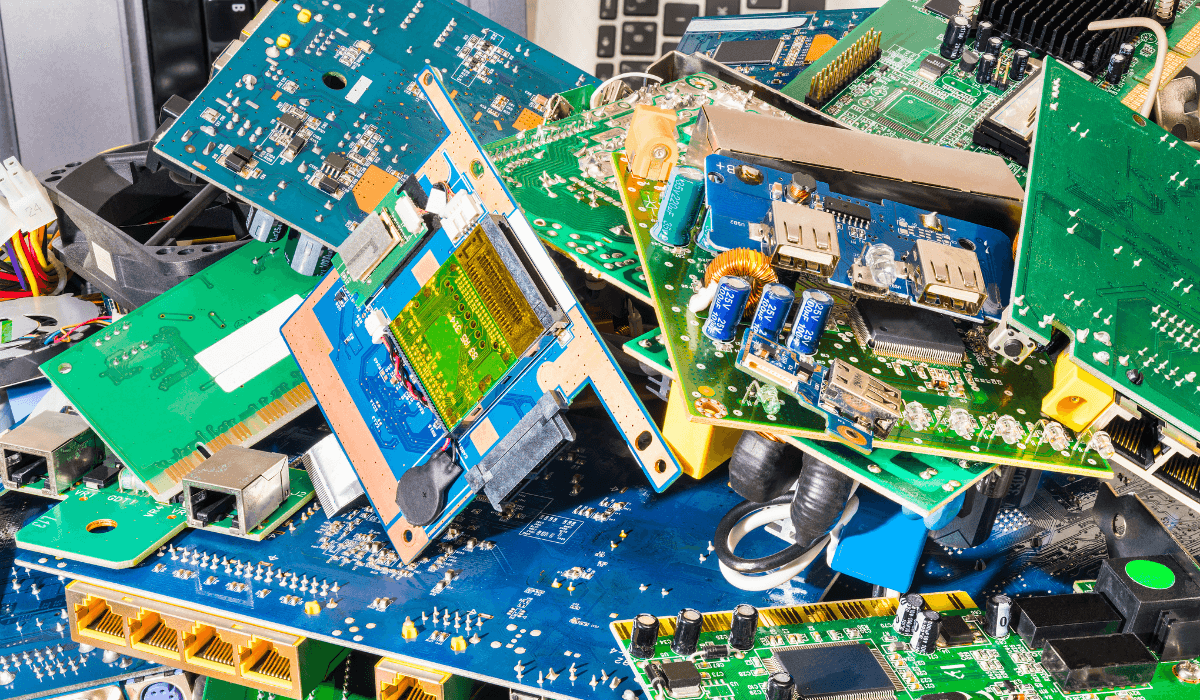In June, the GreenBiz Circularity conference came to Seattle. With the conference site about 15 miles from me, I had to go. The last day included an in-depth session called “Recovering Critical Minerals from E-Waste and the Untapped Urban Mine.” The speakers represented companies that are household names—Google, Intel, Best Buy—plus some that are less well-known, like ERI and the International Council on Mining and Metals.
What are Critical Minerals?
Critical minerals are metals with limited global supply and for which there are no easy substitutes. Countries maintain lists of dozens of critical minerals. The most recent report from the International Energy Agency (IEA) highlights skyrocketing demand for lithium, copper, nickel, and cobalt as part of the transition to clean energy. There is also a need for rare earth elements to make magnets for everything from handheld computers (also known as smartphones) to electric vehicle (EV) motors and giant wind turbines.
The risk of depleting known reserves of the ores needed to mine some of these metals is a serious problem. Since it takes over a decade to develop a new mine, this is not a supply we can quickly ramp up as needed. As the IEA report states, “Today’s supply and investment plans are geared to a world of more gradual, insufficient action on climate change.” Presenter Mike Werner, Head of Circular Economy at Google, gave some data using copper as an example. He said that total copper mining to date is about 700 million metric tons (tonnes). Projections of future demand suggest that we will need to mine billions of tonnes in the next 20 years.
What can we do about this problem? For one thing, keep everything in perspective. A pending mineral shortage does not mean we should abandon plans to electrify transportation and create electricity without fossil fuels. But we must be realistic about the transition and what it will require.
There are two main ways to increase the supply of critical minerals: conventional mining (digging up and processing ores buried under the earth’s surface) and urban mining (grinding up used electronic devices and extracting the metals inside them). Both are necessary to meet demand in the coming years.
Progress in E-waste Collection and Recycling
Global e-waste recycling rates are dismal, but they are trending upward. Retailer Best Buy has run a takeback program since 2009 that has collected 2.3 billion pounds of consumer electronics. Around half that weight is “other”. That means everything other than phones, tablets, and laptops. It includes TVs, large appliances, and other household items that use electricity.
Recovering critical minerals from products in the “other” category requires much more effort than for phones. Phones are easy. Recyclers remove the battery and then grind up the whole thing. Larger appliances require manual disassembly to reach the circuit boards inside. That is why recyclers often charge a fee for collecting things like monitors and TVs.
Best Buy’s approach is to use takeback as the first step. It makes sense. Once someone is in the store to turn in e-waste, they might buy new products. Those products, of course, will eventually become e-waste. It’s a cycle that is profitable for Best Buy and makes it easier for individuals to turn in their old electronics but doesn’t completely solve the problem.
ERI—Electronic Recyclers International—can vouch for the mountains of e-waste. According to ERI founder John Shegerian, the company processed 18 million pounds of it in May 2023. Processing sometimes involves refurbishing devices or recovering parts. When that isn’t possible, they shred the scrap and send plastics, metals, and glass for further processing. The company tracks the minerals it sends back to smelters.
What Can We Do?
Several panelists at the GreenBiz event mentioned the need for better tracking and transparency. Manufacturers will have a hard time increasing the recycled content in their products if they can’t verify whether metals that claim to be recycled have been. Metals retain their quality regardless of how many times they have been recycled. That’s a good thing but also a challenge for tracking. There is no way to test metals to determine whether they are primary (mined) or secondary (recycled).
One of Intel’s 2030 sustainability goals is to improve the traceability of tantalum, tin, gold, and cobalt through the supply chain. The company currently vets and audits 28% of its incoming metals, so there is ample opportunity for improvement.
What can companies in 3D packaging do? First, understand your starting point. What critical minerals do you use? Have you audited your sources, and can you find recycled content for any of the metals you need? Talk to your suppliers to find out. Depending on where your company fits in the supply chain, you might offer products that help your customers reduce their need for critical minerals.
For many critical minerals, our industry is a minor player. Other industries have much more sway over the supply and processing. In some ways, that is more reason to be proactive. If industries that require larger quantities of copper or other metals take it all, we might be in a tough spot. Still, we can all educate ourselves about the challenges and opportunities.
As the panel wrapped up, Moderator Lauren Phipps challenged the speakers to share in one word what it would take to improve the e-waste system. Their answers: collaboration, education, solutionize.
(In case you were wondering, the word solutionize has two definitions. 1. Heat a metal alloy and form a homogeneous solid solution; 2. Solve a problem that has yet to be defined.)




















